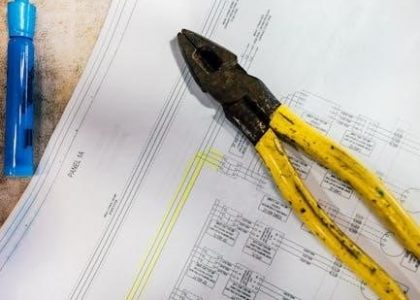Overview of the Test
The Year 2 Arithmetic Test is designed to assess a child’s mathematical skills and knowledge, with a focus on arithmetic operations and problem-solving. The test is typically taken by children in Year 2 and is used to evaluate their understanding of mathematical concepts. According to online resources, the test consists of a series of questions that cover various topics, including addition, subtraction, multiplication, and division. The test is usually timed, with children having a set amount of time to complete the questions. The test is an important assessment tool, providing teachers and parents with valuable information about a child’s mathematical abilities and identifying areas where they may need additional support. By evaluating a child’s performance on the test, teachers can tailor their instruction to meet the individual needs of each student. The test is also used to track progress and identify areas for improvement.
Structure of the Test
The test consists of multiple sections, including arithmetic questions and problem-solving tasks, with clear instructions and timing guidelines provided for each section of the test online effectively.
Test Format
The test format for the Year 2 Arithmetic Test PDF typically includes a series of questions and tasks that assess a child’s mathematical skills and knowledge. The test is usually divided into sections, with each section focusing on a specific area of mathematics, such as addition, subtraction, multiplication, and division. The questions are designed to be engaging and challenging, with clear instructions and examples provided to support children’s understanding. The test format may also include visual aids, such as diagrams and charts, to help children understand complex mathematical concepts. Additionally, the test may include a mix of multiple-choice questions, short-answer questions, and problem-solving tasks to assess children’s critical thinking and mathematical reasoning skills. Overall, the test format is designed to be fair, reliable, and valid, providing an accurate assessment of children’s mathematical abilities. The test is typically administered in a controlled environment.
Types of Questions
Types of questions include multiple-choice, short-answer, and problem-solving tasks, assessing children’s mathematical skills and knowledge in arithmetic and mathematics effectively online every day.
Arithmetic Questions
Arithmetic questions are designed to assess children’s mathematical skills and knowledge in areas such as addition, subtraction, multiplication, and division. These questions are typically presented in a variety of formats, including multiple-choice, short-answer, and problem-solving tasks. The questions are carefully crafted to evaluate children’s ability to apply mathematical concepts to real-world problems and to think critically and logically. In the Year 2 Arithmetic Test, children are expected to demonstrate their understanding of basic arithmetic operations and to use these skills to solve simple problems. The test includes a range of questions that are designed to be fun and engaging, while also providing a comprehensive assessment of children’s arithmetic skills. By practicing with sample arithmetic questions, children can build their confidence and develop a stronger understanding of mathematical concepts. This helps to prepare them for the test and for future mathematical challenges.
Practice Papers and Resources
Practice papers and resources are available online to support learning and assessment in mathematics and arithmetic skills for Year 2 students effectively using digital platforms and tools always.
Available Resources
There are various resources available to support Year 2 students in preparing for the arithmetic test, including practice papers and online tools. These resources can be accessed through the internet and are designed to help students develop their mathematical skills. The practice papers are similar to the actual test and cover a range of topics, including addition, subtraction, multiplication, and division. Online tools, such as interactive games and quizzes, can also be used to make learning fun and engaging. Additionally, many schools and educational institutions provide their own resources and support materials to help students prepare for the test. These resources can be accessed through the school’s website or by contacting the teacher directly. By using these resources, students can feel more confident and prepared for the test. Overall, the available resources can be very helpful in supporting student learning and achievement.
Guidance for Children and Parents
Guidance for children and parents is provided through online resources and support materials, including tips and advice for preparing for the Year 2 arithmetic test effectively at home every day.
Test Guidance
Test guidance is essential for children and parents to understand the format and content of the Year 2 arithmetic test, including the types of questions and time allocated for the test.
Children will have 30 minutes to complete the test, and long division and long multiplication questions are worth 2 marks each, with children awarded 2 marks for a correct answer.
Guidance materials provide tips and advice for preparing for the test, including practice papers and resources to support learning and assessment in mathematics and arithmetic skills.
Online resources and support materials are available to help children and parents prepare for the test, including guidance on the test format and content, as well as tips for effective revision and practice.
Test guidance also includes information on the marking scheme and how the test will be assessed, helping children and parents to understand what is expected of them.
Importance of the Test
The test assesses mathematical skills and knowledge, identifying areas for improvement and informing future teaching and learning strategies effectively online always.
Assessing Mathematical Skills
The Year 2 Arithmetic Test PDF is designed to assess mathematical skills and knowledge, providing a comprehensive evaluation of a child’s understanding of arithmetic concepts. The test covers various aspects of mathematics, including addition, subtraction, multiplication, and division, as well as shape and space, and data handling. By assessing mathematical skills, the test helps to identify areas where children may need additional support or practice, informing future teaching and learning strategies. The test also provides an opportunity for children to demonstrate their mathematical abilities, building confidence and fluency in their mathematical skills. Overall, the Year 2 Arithmetic Test PDF is an essential tool for assessing mathematical skills and supporting children’s mathematical development. It is used by teachers and parents to evaluate children’s progress and understanding of mathematical concepts.
Preparation and Revision
Preparation and revision for the test involve practicing arithmetic skills and using online resources to support learning and improve mathematical understanding effectively every day.
Revision Strategies
Effective revision strategies for the Year 2 Arithmetic Test include practicing with sample questions and using online resources to support learning.
Using past papers and practice tests can help children become familiar with the test format and content.
Regular practice and review of arithmetic skills, such as addition and subtraction, can also help to build confidence and improve understanding.
Additionally, using visual aids and games can make revision more engaging and fun for children.
Parents and teachers can also provide support and guidance to help children develop effective revision strategies and stay motivated.
By using a combination of these strategies, children can feel more prepared and confident when taking the test.
Overall, a structured and supportive approach to revision can help children achieve their best results in the Year 2 Arithmetic Test.
Revision strategies should be tailored to meet the individual needs of each child.




